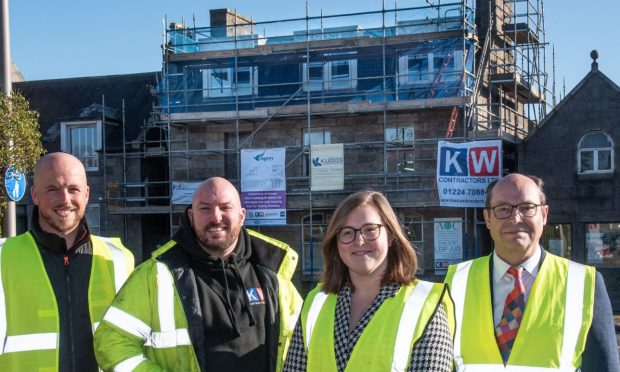Developers could be freed from helping to pay for community projects in an effort to speed up the regeneration of north-east town centres.
Aberdeenshire Council will ask councillors next week to consider proposals to drop developer obligation fees – used to part-fund waste recycling, libraries and sports facilities – to reduce planning “red tape”.
It is hoped the move will speed up the process of new projects coming forward from developers and attract more business in Fraserburgh, Peterhead, Banff and Macduff.
In the past year, contributions from developers have provided the ports with £128,684.
The council’s director of infrastructure services, Stephen Archer, has proposed the new initiative.
In his report to Buchan area committee, which will discuss the move on Tuesday, he said it was already “questionable” whether the council should be attempting to recoup cash for facilities that need investment from incoming developers.
He added: “There is also anecdotal evidence of developers citing developer obligations requirements as a factor in the decision to pull out of proposals to take on and redevelop sites.
“It would also result in a less bureaucratic system, reducing “red tape”, and the perception that the council is ‘hindering’ redevelopment opportunities by placing additional costs upon what is already a subsidised project.
“It could also be seen as a further positive measure of support from the council for these areas and potentially act as an attraction to developers. These would be positive outcomes of any exemption in terms of the development potential of the four towns.”
Developer obligations are assessed individually and on the viability of each development as they come forward as planning applications.
They came under fire last year, however, when a farmer successfully won his battle to stop making payments towards affordable housing as part of his developer obligation.
James Norrie was given the go-ahead to erect three turbines on his land at Cairnhill near Turriff in 2014 – on the condition he would pay £1,870 a year towards housing projects in the town.
When he applied to have the payments stopped, planning officers agreed with him that it was no longer “reasonable” to expect him to pay.
Local councillors feared that the ruling would “opening the floodgates” to similar challenges from other developers.










